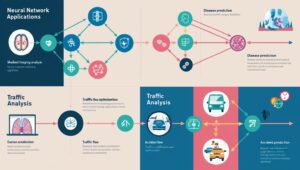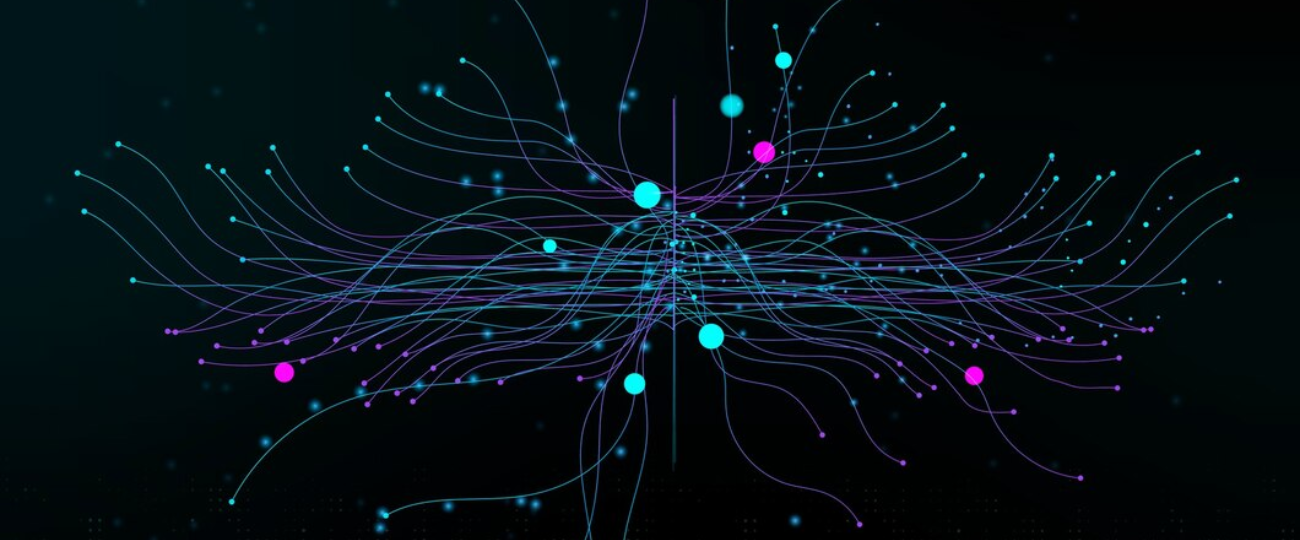The Origins of Neural Networks: Pioneers and Progress
Neural networks were conceptualised in the 1940s by Warren McCulloch and Walter Pitts. Inspired by the structure of the human brain, these models gained prominence in the 1980s when Geoffrey Hinton and his team advanced their design and functionality. this marked the beginning of their transformation into a cornerstone of artificial intelligence.
What Are Neural Networks? A Beginner’s Guide to AI Brilliance
Imagine a network of train tracks where each junction represents a decision point. Data flows through these tracks, adjusting at each junction to reach the desired output. Neural networks emulate the brain’s ability to process information, using interconnected nodes arranged in layers to identify patterns and deliver predictions.

Why Neural Networks Are Transforming Machine Learning
Neural networks address significant machine learning challenges:
- Advanced Pattern Recognition: Identifies relationships in complex datasets, including images, speech, and text.
- Scalability: Processes large datasets efficiently.
- Versatility: Tackles diverse applications such as predictions, classifications, and forecasting.
Without neural networks, advancements in fields like image recognition, natural language processing, and predictive analytics would be limited.
How Neural Networks Work: A Step-by-Step Guide
Using a neural network involves:
-
- Preparing and splitting data into training, validation, and test sets.
- Designing the architecture with input, hidden, and output layers.
- Training the model using backpropagation to iteratively refine its weights.
- Validating and testing the model to ensure accuracy and reliability.
This systematic learning process enables neural networks to deliver accurate results across various tasks.
Exploring the Types of Neural Networks
Neural networks come in several types, including:
-
- Feedforward Neural Networks: Suitable for tasks with straightforward data flow.
- Convolutional Neural Networks (CNNs): Ideal for visual data processing, such as images and videos.
- Recurrent Neural Networks (RNNs): Designed for sequential data, like time series or language.
- Transformer Networks: Revolutionising natural language processing with their efficiency.
Unpacking the Features of Neural Networks
- Non-linearity: Captures intricate data relationships.
- Layered Architecture: Arranges nodes in input, hidden, and output layers.
- Activation Functions: Allows the network to model complex, non-linear patterns.
Top Tools for Neural Network Development
Popular tools for neural network development include:
-
- TensorFlow: A robust framework for deep learning applications.
- PyTorch: Known for flexibility and ease of experimentation.
- Keras: Simplifies the creation of neural networks with a high-level API
- R Libraries: Tools like net and kerasR, support neural network modelling in statistical environments.
Industry Application Examples in Australian Governmental Agencies

-
- Healthcare Analytics: Forecasting patient outcomes and detecting early-stage diseases using medical data.
- Traffic Optimisation: Analyzing congestion patterns to improve urban planning and infrastructure.
- Economic Policy Modelling: Leveraging financial data to predict the impacts of policy decisions.
How interested are you in uncovering even more about this topic? Our next article dives deeper into [insert next topic], unravelling insights you won’t want to miss. Stay curious and take the next step with us!







